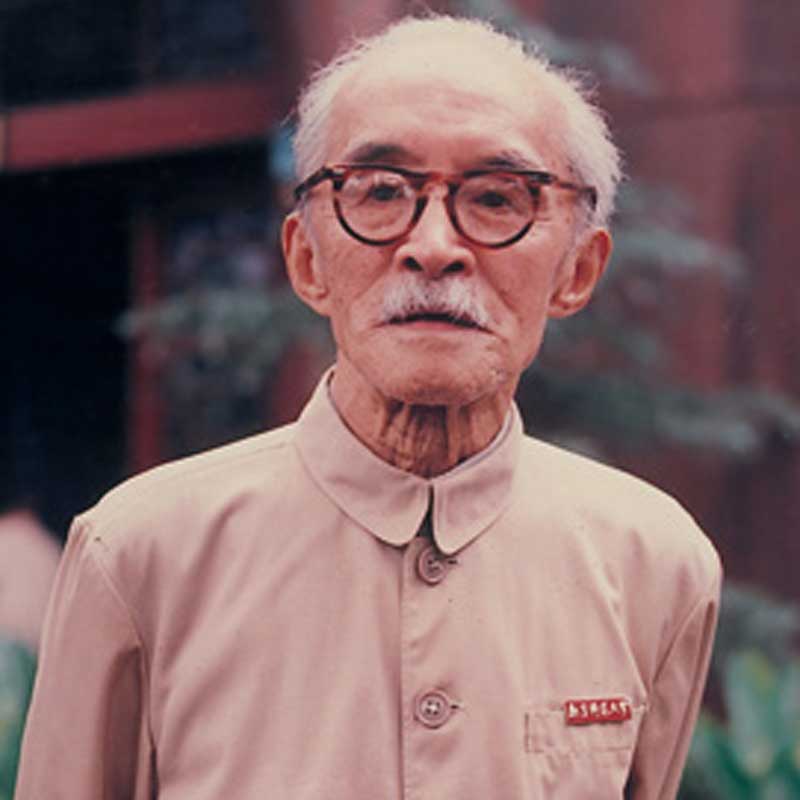1906年生于广西桂林,1929年毕业于清华大学外语系,1930年赴法国入巴黎高等美术学院学习油画,并在卢浮宫学院和巴黎大学艺术考古研究所研习西方美术史,回国后从事美术教育五十多年,他在油画上兼取古典与现代之长,并融入自己对艺术质量、格调、意境的追求,表现出活跃的艺术思维与探索的勇气。
作为中国油画的开拓者之一和杰出的老一辈画家,他以“抱住人生、搂定自然”的精神,一生创作了大量反映现实生活和描绘大自然的绘画作品。由于他早年在旅欧期间打下了深厚的艺术理论基础,具备了渊博的美学修养和熟练的绘画技巧,其画作得到同时代许多大师的嘉许。纵观其一生的绘画创作,早期(赴法留学至1949年建国前)画风受欧洲古典绘画影响,朴实、严谨,显示出坚实的造型功力,所作人物肖像及主题性创作尤为引人注目;中期(1949年建国后至1965年“文革”前)他以饱满的热情投身于新中国的建设事业,用画笔热情讴歌新的时代与新的生活,创作了许多大场面、多人物的作品。其题材虽取自现实生活,但技法上却糅以印象派的笔调与色彩,画风奔放,色彩明丽,在写实的基础上已带有写意的浪漫旨趣。晚期(“文革”后至逝世前)其画风变得更加自由、率真,在媒材上除油画、水粉、水彩、丙烯画之外,还尝试着做了大量的独幅版画(Monotype),反映出他毫无顾忌的自由心境和“返朴归真”的童稚之心。
Born in Guilin, Guangxi in 1906, he graduated from the Department of Foreign Languages of Tsinghua University in 1929. In 1930, he went to France to study oil painting at the Ecole des Beaux-Arts in Paris, and studied Western art history at the Louvre Academy and the Institute of Art and Archaeology of the University of Paris. After returning to China, he has been engaged in art education for more than 50 years. He combines the strengths of classical and modern oil painting, and integrates his pursuit of artistic quality, style, and artistic conception, showing active artistic thinking and courage to explore.
As one of the pioneers of Chinese oil painting and an outstanding painter of the older generation, he created a large number of paintings reflecting real life and depicting nature in his life with the spirit of "embracing life and embracing nature". Because he laid a solid foundation in art theory during his early years in Europe, he has profound aesthetic cultivation and skilled painting skills, and his paintings have been praised by many masters of his time. Throughout his life, his painting style was influenced by European classical paintings in his early period (from studying in France to before the founding of the People's Republic of China in 1949), which was simple and rigorous, showing solid modeling skills. His portraits and thematic works were particularly eye-catching. In the middle period (from the founding of the People's Republic of China in 1949 to before the "Cultural Revolution" in 1965), he devoted himself to the construction of New China with full enthusiasm, and used his brush to enthusiastically eulogize the new era and new life, creating many large-scale and multi-character works. Although his subject matter was taken from real life, his technique was mixed with impressionist style and color. His painting style was unrestrained and the colors were bright. On the basis of realism, he already had a romantic interest in freehand painting. In his late period (from after the "Cultural Revolution" to before his death), his painting style became more free and straightforward. In addition to oil painting, gouache, watercolor, and acrylic painting, he also tried to make a large number of monotypes, reflecting his unrestrained free state of mind and his childish heart of "returning to nature".


